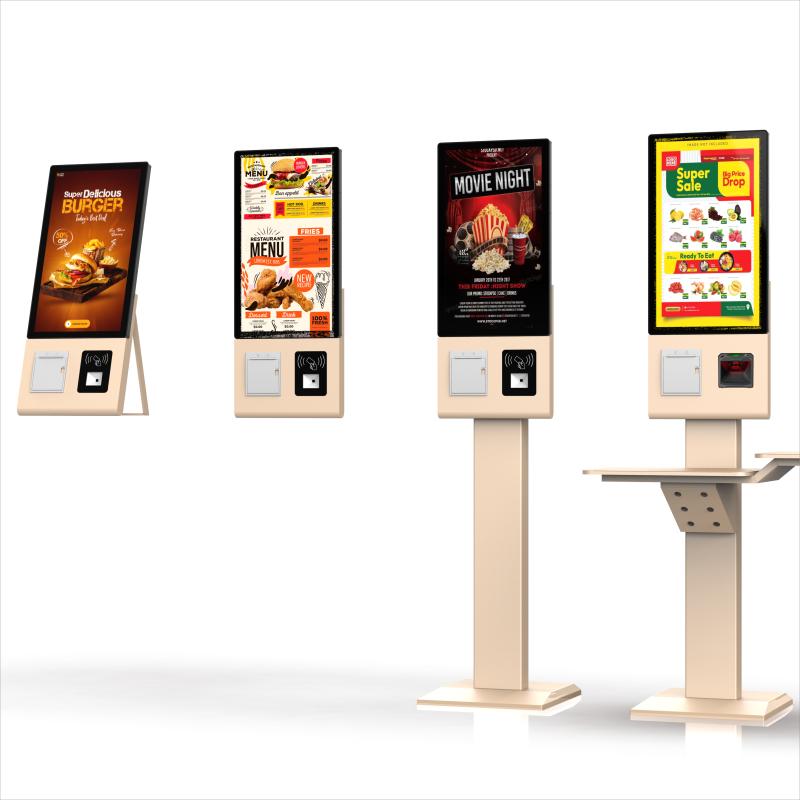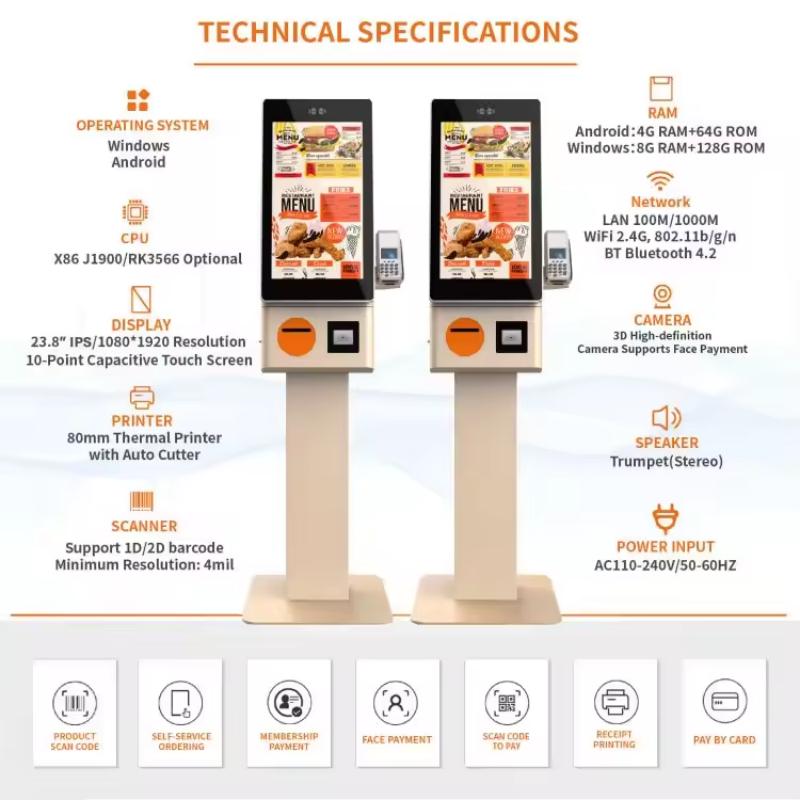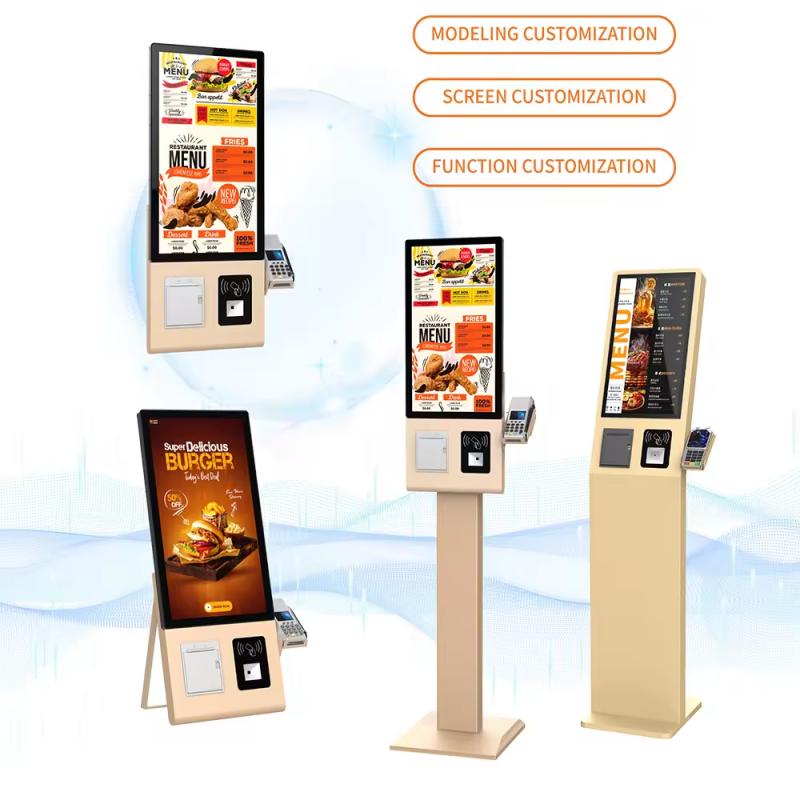Project Timeline: May 2023
Location: London, United Kingdom
Client: McDonald’s
McDonald’s restaurants in London, specifically a high-traffic location in the city center, faced significant operational challenges during peak hours. The primary issue was long queues, resulting in customer dissatisfaction and delayed order fulfillment. With London being a bustling metropolis, McDonald's management identified the need for a streamlined ordering process that could reduce wait times, improve customer experience, and increase operational efficiency.
The manual ordering system was no longer sustainable for this high-traffic location, and McDonald's was looking for a technological solution to modernize its restaurant operations. McDonald's had already experimented with self-service kiosks in other regions, but this project was specifically tailored to the unique needs of the London location. The objective was to not only introduce McDonald's kiosks but to fully optimize their integration into the restaurant’s workflow and maximize the return on investment (ROI).

The primary goals for the McDonald’s kiosk project were:
Reduce Queue Times: Implement McDonald's kiosks to speed up the ordering process and reduce long queues during peak hours.
Enhance Customer Experience: Provide a user-friendly interface for customers to order quickly and customize their meals without waiting in long lines.
Increase Operational Efficiency: Streamline the workflow to handle larger customer volumes without increasing labor costs.
Boost Revenue: Utilize the McDonald's kiosk to promote upselling options and targeted marketing offers.
Optimize Space Utilization: Maximize the use of limited space in the restaurant by implementing a strategic layout of the kiosks.
Ensure Accessibility: Introduce ADA-compliant McDonald's kiosks to make ordering accessible for all customers, including those with disabilities.
As an experienced kiosk manufacturer, our team was selected to deliver a solution that addressed McDonald's operational challenges while improving customer satisfaction. The solution involved custom-designed McDonald's kiosks, tailored to the specific needs of the London location.
McDonald's Kiosk Installation: We proposed a series of strategically placed McDonald's kiosks near the entrance and central points of the restaurant, allowing customers to bypass traditional cashier queues.
Touchscreen User Interface: The McDonald's kiosks were equipped with high-resolution, intuitive touchscreens, enabling customers to easily browse the menu, customize their orders, and complete transactions. Multilingual support was also integrated to cater to the diverse population in London.
Secure Payment Options: To ensure secure and convenient transactions, the kiosks were integrated with multiple payment methods, including contactless card payments, NFC mobile wallets, and even cash for those who preferred traditional methods.
Real-Time POS Integration: The McDonald's kiosks were fully integrated with the restaurant’s existing point-of-sale (POS) system. This allowed orders to be instantly transmitted to the kitchen, improving order accuracy and reducing preparation times.
ADA Compliance: Our kiosks were designed with accessibility in mind, featuring adjustable heights and voice-guided menus for customers with disabilities, ensuring that everyone could easily use the McDonald's kiosk.
Marketing & Upselling: The software was designed to encourage upselling by suggesting additional items based on customer orders, effectively increasing the average order value and boosting revenue.

We worked closely with the McDonald's team to develop a detailed implementation plan that ensured minimal disruption to daily operations while delivering the McDonald's kiosks on schedule.
Week 1: Initial consultations and site surveys were conducted to assess the best kiosk placement locations.
Week 2: Custom McDonald's kiosk designs were finalized, including screen sizes, ADA-compliant features, and branding integration.
Week 3: Hardware procurement and kiosk production began, while software customization was underway to ensure seamless POS integration.
Week 4-5: Installation of McDonald's kiosks took place, and the technical team worked on integrating the kiosks with McDonald's payment systems and backend infrastructure.
Week 6: Testing and staff training were conducted. Staff were trained on how to guide customers in using the kiosks and how to manage the backend systems for kiosk orders.
The McDonald’s kiosk project was expected to achieve the following results:
Queue Time Reduction: By shifting a significant portion of customers from traditional cashier lines to McDonald's kiosks, we anticipated a 40% reduction in queue times during peak hours.
Increase in Revenue: The upselling features and promotional integration on the McDonald's kiosks were expected to boost revenue by 10% within the first three months of implementation.
Enhanced Customer Experience: With the ability to customize their orders quickly and easily, customer satisfaction was projected to increase, leading to repeat business.
Efficiency Gains: By reducing the reliance on cashiers for order-taking, the restaurant could operate more efficiently, reducing staffing costs and increasing throughput.

After the implementation of McDonald's kiosks, the restaurant saw significant improvements in its day-to-day operations. Feedback from both the management team and customers was overwhelmingly positive:
Queue Time Reduction: The McDonald's kiosks successfully reduced average queue times by 45% during peak hours. Customers appreciated the convenience of skipping the lines and placing their orders directly at the kiosks.
Revenue Increase: Thanks to the upselling features built into the kiosks, the restaurant experienced a 12% increase in average order value, surpassing initial revenue expectations.
Operational Efficiency: The McDonald's team noted a 30% increase in operational efficiency, as staff were able to focus more on food preparation and customer service, rather than managing order queues.
Customer Satisfaction: Surveys conducted after the McDonald's kiosk implementation showed that 85% of customers preferred using the kiosks over traditional ordering methods.
One of the key outcomes of the project was the reduction in operational costs. By relying on McDonald's kiosks for the majority of orders, the restaurant was able to reduce its staffing needs during peak times, leading to a 20% reduction in labor costs. Additionally, the efficient use of kiosk technology minimized errors in order taking, saving both time and resources.
The McDonald's kiosk project in London demonstrates the profound impact that self-service technology can have on the efficiency and profitability of a quick-service restaurant. By implementing our custom McDonald's kiosk solution, the restaurant was able to reduce wait times, increase customer satisfaction, and boost revenue—all while maintaining high operational standards.
Increased Efficiency: The introduction of McDonald's kiosks reduced manual order-taking and allowed for a faster, more streamlined process.
Revenue Growth: With built-in upselling features, the kiosks helped increase the average ticket size, directly impacting revenue.
Customer Satisfaction: The user-friendly interface and fast ordering process made the McDonald's kiosks a favorite among customers.
Operational Savings: The restaurant reduced its labor costs by 20%, thanks to the automation of the ordering process.
As a trusted McDonald's kiosk manufacturer, we not only provide high-quality kiosk solutions but also ensure a seamless integration into your restaurant’s operations. Our commitment to innovation and customer satisfaction makes us the ideal partner for businesses looking to optimize their services with McDonald's kiosks.
This case study highlights our expertise and showcases how McDonald's kiosks can transform restaurant operations. We look forward to helping more businesses achieve similar success by leveraging the power of self-service technology.